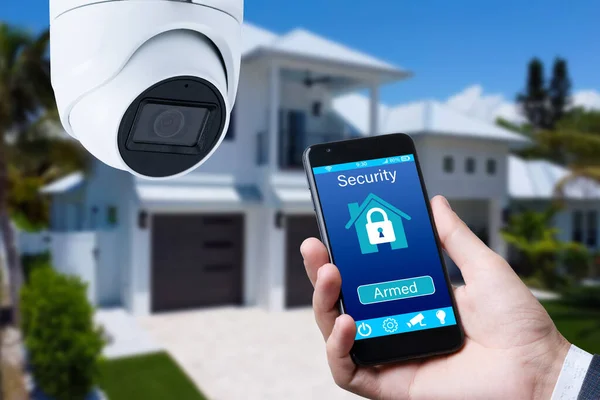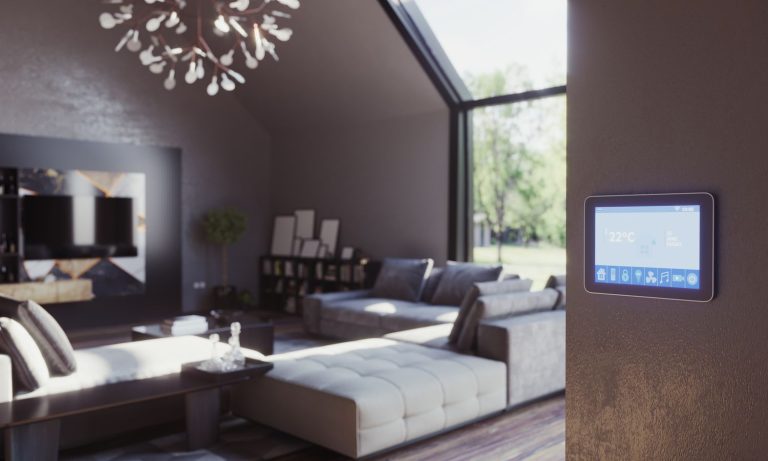As the world becomes increasingly interconnected, smart home technology has rapidly transitioned from a luxury to a necessity. The promise of a more comfortable, convenient, and efficient living environment has driven homeowners to embrace smart devices in every aspect of their homes. Two primary driving forces in the smart home revolution are energy efficiency and voice control. Both offer distinct advantages—energy-saving devices lower utility bills and help reduce environmental impact, while voice control brings unparalleled convenience and hands-free operation. But when deciding between the two, which one reigns supreme in terms of enhancing the overall smart home experience?
In this article, we’ll explore the benefits and drawbacks of both energy-efficient technologies and voice control, weigh their relative importance, and offer insights into how you can effectively incorporate both into your home to create an optimized living environment.
Energy Efficiency: The Pillar of Sustainable Living
Energy efficiency is one of the most compelling reasons homeowners are increasingly drawn to smart home technology. As utility costs rise and environmental concerns grow, finding ways to reduce energy consumption has never been more important. Smart devices that optimize energy use can save both money and resources, helping households become more sustainable.
1. Smart Thermostats: Comfort Meets Conservation
A standout feature of energy-efficient smart homes is the smart thermostat. These devices have the power to adjust heating and cooling automatically based on your schedule, occupancy, and preferences, making them a central piece in any energy-conscious home. Thermostats like the Google Nest Learning Thermostat or the Ecobee SmartThermostat learn your habits over time—if you regularly leave the house at a particular time each day, the device will adjust the temperature accordingly to avoid wasting energy.
The true appeal of smart thermostats lies in their ability to optimize climate control. By maintaining comfortable temperatures while also conserving energy, smart thermostats can reduce heating and cooling bills by up to 15%. Furthermore, many models provide remote control via smartphone apps, so you can adjust the temperature from anywhere, ensuring you never waste energy when you’re away.
2. Smart Lighting: Cutting Costs with Convenience
Smart lighting is another great way to reduce energy consumption while enhancing the ambiance of your home. Traditional lighting can be wasteful, especially if lights are left on in unoccupied rooms. With smart bulbs, like those offered by Philips Hue or LIFX, you can schedule when lights turn on and off or adjust their brightness to suit different activities. These bulbs can even change color, offering both practical and aesthetic benefits.
Moreover, the energy savings are significant. Smart lighting uses energy-efficient LED technology, which consumes less power than incandescent bulbs. Additionally, because you can control when and how lights are used, you’ll never have to worry about lights burning for hours when not needed. The integration of motion sensors allows smart lighting to activate only when someone enters a room, reducing electricity consumption even further.
3. Smart Plugs and Appliances: Take Control of Non-Smart Devices
Smart plugs are an easy and cost-effective way to control appliances that aren’t inherently “smart.” By plugging these devices into smart outlets, you can schedule when they turn on and off, preventing energy waste from appliances that consume power even in standby mode—such as coffee makers, toasters, or televisions. This is a simple yet effective way to curtail unnecessary energy consumption.
Additionally, the next generation of smart appliances—refrigerators, washing machines, and dryers—offers features that optimize energy use. These devices can be scheduled to run at times when electricity rates are lower, ensuring that you’re not overpaying for energy during peak hours.
Voice Control: The Convenience of Hands-Free Living
Voice control is one of the most user-friendly features of smart home technology. With the help of voice assistants like Amazon Alexa, Google Assistant, and Apple Siri, you can effortlessly manage your home environment using only your voice. The power to control lights, adjust thermostats, or play music without lifting a finger is not only convenient but also adds a layer of accessibility for individuals with mobility issues or those simply seeking an easier way to manage their homes.
1. Hands-Free Control: The Key to Effortless Living
Voice assistants have made everyday tasks much easier. You can ask Alexa to dim the lights while you settle in for a movie, or tell Siri to adjust the temperature as you relax on the couch. This type of voice command technology adds a level of ease and efficiency that wasn’t possible before, especially for those managing a busy household.
Moreover, voice control brings flexibility. Whether you’re in the kitchen, the living room, or even outside, you can control various devices from anywhere in your home, without needing to grab a phone or fiddle with switches. This hands-free experience enhances convenience in ways traditional methods simply can’t match.
2. Smart Integrations: A Unified Home Experience
One of the most significant advantages of voice control is the integration it offers across multiple devices. Voice assistants can coordinate with a wide range of smart home products, from security cameras to entertainment systems, creating a unified smart home ecosystem. For instance, you could ask Google Assistant to turn on the lights, lock the doors, and play your favorite playlist all in one command, creating an environment that is perfectly suited to your mood or activity.
With the proliferation of smart home products, voice control has become a central hub for managing everything from entertainment to home security. This level of integration brings unmatched ease to homeowners who want a seamless, all-encompassing smart home experience.
3. Accessibility and Multi-Tasking
Another significant benefit of voice control is its ability to assist with multi-tasking and improve accessibility. Imagine cooking dinner and having the ability to ask your voice assistant for the weather forecast, add items to your shopping list, or control your smart thermostat—all without having to stop what you’re doing. For individuals with disabilities or those who are simply looking for a hands-free approach to managing their daily routines, voice control significantly enhances quality of life.
Energy vs. Voice Control: Which Is Best for Your Smart Home?
The question of whether energy efficiency or voice control works best for a smart home isn’t easily answered, as both are vital in creating a truly connected and efficient living environment. That said, the decision largely depends on your personal priorities, lifestyle, and the way you envision interacting with your home.
If your primary goal is to reduce energy consumption, save on utility bills, and promote sustainability, then focusing on energy-efficient devices should be your top priority. Smart thermostats, lighting, and appliances can significantly lower energy waste and help you maintain a more sustainable lifestyle. Over time, the cost savings associated with these devices can be substantial, and their impact on your home’s carbon footprint is an added benefit.
On the other hand, if convenience and ease of use are more important to you, voice control may be the better option. The ability to control multiple devices from a single platform with just your voice offers a level of convenience that can be hard to beat. Furthermore, voice assistants can manage your home’s security, lighting, entertainment, and even your energy-efficient devices, making them the perfect complement to a smart home that integrates multiple functions.
Striking the Right Balance
In most cases, the best approach is a balanced one. Energy-efficient devices and voice control are not mutually exclusive—they can work in tandem to create a smarter, more efficient home. For example, a voice assistant like Amazon Alexa can control a smart thermostat to adjust the temperature in your home and manage smart lighting to optimize energy consumption. Integrating both features allows you to reap the benefits of both energy efficiency and hands-free convenience.
A balanced smart home not only makes day-to-day living more efficient and enjoyable but also promotes long-term sustainability. By investing in both energy-saving devices and voice-controlled technology, you create a home that is as functional as it is eco-friendly.
Conclusion
When choosing between energy efficiency and voice control in your smart home, it’s clear that both technologies offer distinct and valuable advantages. While energy-efficient devices help save money and reduce environmental impact, voice control brings unparalleled convenience and ease of use. In reality, integrating both features into your home will allow you to enjoy the best of both worlds—an energy-conscious, seamlessly connected home that enhances your lifestyle. Whether you’re seeking to save on energy costs, simplify your routines, or make your home more sustainable, the future of smart living is all about balancing the benefits of these innovations to create the ultimate home environment.















